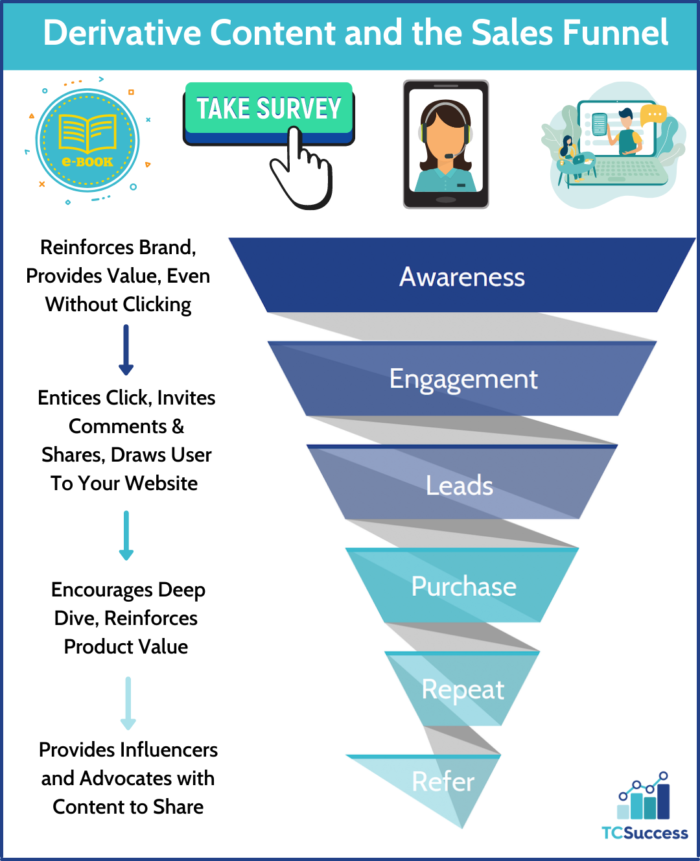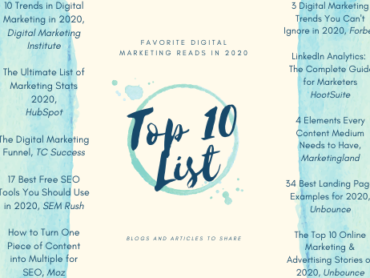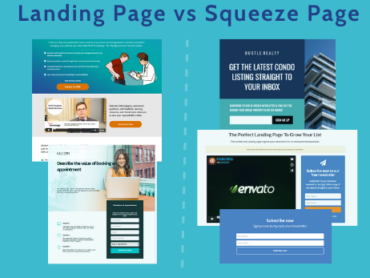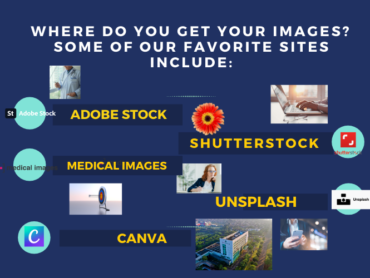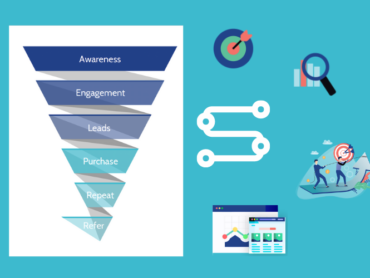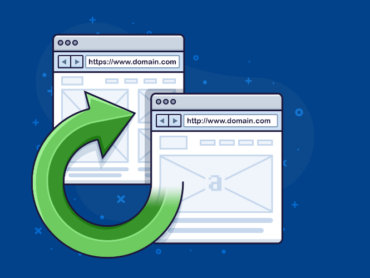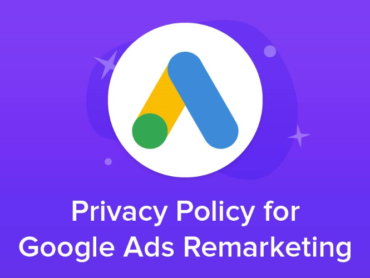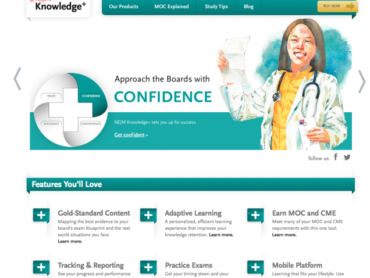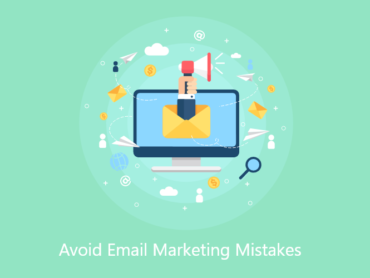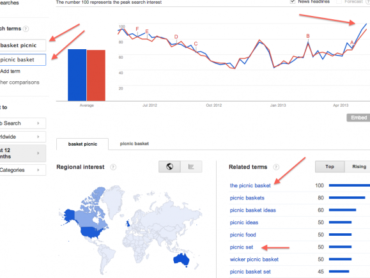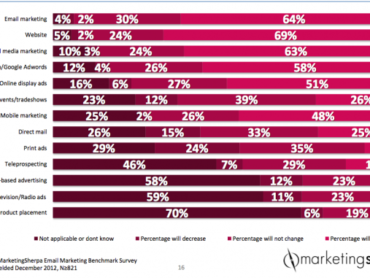
How to Increase Content Engagement
A good content engagement strategy requires content that is relevant to your audience, showcases your organization’s expertise, and allows you to share your thought leadership with those who can benefit from it the most. It establishes you as an authority and helps you build trust with your audience. But in today’s digital landscape, the competition for attention is steep. So, how do you increase content engagement, especially if it covers in-depth or complex topics?
To increase content engagement, it is important to:
- Identify the Barriers to Content Engagement.
- Understand Your Audience’s Content Engagement Bandwidth.
- Reduce the Barriers to Engagement with a Multifaceted Approach to Content Creation.
If you’ve struggled with meeting your content engagement KPIs, read on to discover strategies that will help you develop, deploy, and refine a multifaceted strategy that will help you capture and keep your audience’s attention.
Barriers to Content Engagement
To get your target audience excited about your message and the valuable information you have to share, it’s essential first to examine some common obstacles to content engagement. In other words, it’s essential to begin by empathizing with your audience.
There are several reasons an individual may not be receptive when they encounter your content, whether it be in their inbox, on their social feed, or in their search results. Your audience members may be exhausted after a long 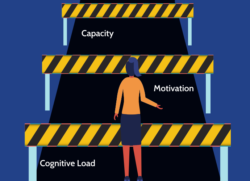 day of work, or they may not be convinced that your content will provide them with value. Your topic may be complex, academic, lengthy, or too time-consuming, or your audience may not yet have enough foundational knowledge to comprehend or absorb it quickly. The barriers for an individual to engage with your content will most likely be some combination of the above. No matter the barriers, you’ll need to lower them to be successful.
day of work, or they may not be convinced that your content will provide them with value. Your topic may be complex, academic, lengthy, or too time-consuming, or your audience may not yet have enough foundational knowledge to comprehend or absorb it quickly. The barriers for an individual to engage with your content will most likely be some combination of the above. No matter the barriers, you’ll need to lower them to be successful.
To understand and lower the barriers to content engagement, consider your audience’s ability to consume your content. In other words, how easy or difficult is it for them to read, understand, and learn from the information you are providing at a given moment in time? To answer this question, let’s explore what we at TC Success call Content Engagement Bandwidth.
Content Engagement Bandwidth
Content Engagement Bandwidth (CEB) is a person’s potential and propensity to interact with, comprehend, and care about your content. CEB is made up of three factors:
Cognitive Load • Motivation • Capacity
Cognitive Load
Cognitive load relates to the mental effort required to understand and absorb new information. Each person’s cognitive load will vary based on the complexity and length of the material and their current knowledge about a topic. Consuming longer, more complex content increases cognitive load. Likewise, the less familiarity with or knowledge about the subject one possesses, the higher the cognitive load necessary to engage with it. This is best understood by exploring a little bit about how we learn something new.
How We Learn New Information
When we learn and absorb new information, we make connections to what we already know. Then we use the new information to revise or reconstruct our existing knowledge framework and to broaden and deepen our understanding. Complex content will be easier to comprehend for  someone who already has some knowledge about the topic because they have an existing schema to make sense of and connect new information. Because everyone’s existing knowledge and experience are different, each will have a different cognitive load for the same content. So what are the factors that govern the cognitive load required to engage with your content?
someone who already has some knowledge about the topic because they have an existing schema to make sense of and connect new information. Because everyone’s existing knowledge and experience are different, each will have a different cognitive load for the same content. So what are the factors that govern the cognitive load required to engage with your content?
Factors that Impact Cognitive Load
Two key factors impact cognitive load – The complexity of your topic and your audience members’ proficiency level.
- The complexity of your topic is an obvious factor that impacts cognitive load. The more complex the material, the higher the cognitive load. Less complicated, easier-to-comprehend content reduces cognitive load.
- On the other side of that coin, is the proficiency level of your audience. The more familiar your audience member is with your topic, the easier it will be for them to understand it, and the higher the likelihood they will find it engaging.
Industry terminology can also impact cognitive load for audience members who are new to a subject area. Unfamiliar vocabulary and acronyms increase cognitive load. As a good content marketer, you strive to reduce jargon, but sometimes there’s no getting around using industry-specific language.
Because some of your audience members will experience a high cognitive load for your topic, you will need to help them build their knowledge overtime through the progression of your campaign(s).
 Motivation
Motivation
Whereas cognitive load refers to an individual’s ability to engage with your content, motivation refers to their desire and willingness to engage with it. There is a range of factors that impact your audience’s motivation. If their job or task is highly dependent on understanding the material, if their personal interest in the topic is high, or if their peer group values the topic, they are more likely to be motivated.
People generally are more motivated to engage with content that offers them professional value or personal reward. If your content helps them to enhance their professional skills, grow intellectually and emotionally, or advances their ability to participate in an exciting activity or hobby, then their motivation will be higher. If your reader does not recognize any of these benefits, they are less likely to care about your content.
Motivation comes in two forms – intrinsic and extrinsic.
Intrinsic motivation is derived from within and is driven by one’s interest in or enjoyment of the material, as well as their need to grow emotionally and intellectually.
Extrinsic motivation is derived from without and includes one’s desire for professional development, peer pressure, or their need for recognition and reward.
Regardless of the source, the higher your reader’s motivation, the lower their resistance to engage with your content. This means that your engagement strategy should strive to appeal to both your audience’s internal and external motivations. You’ll want your content to entertain your audience and resonate with their interests, but you’ll also want to leverage external influences to motivate them.
Factors that impact Motivation:
- Personal interests, aspirations, and hobbies.
- Professional development and career advancement.
- Credentials such as certifications or licensure.
- Peer pressure and community norms.
- Recognition and rewards.
Capacity 
The ability or willingness to engage with content is also determined, in large part, by one’s immediate (even if temporary) circumstances. What is their current emotional state or physical situation?
A busy professional in your target audience who is rushing to meet a deadline at work may not have the time to read a lengthy article the moment it lands in their inbox, even if they would otherwise be interested. Or it may not be their top priority when they’re juggling too many things and feeling overwhelmed. Perhaps, they’re drained after a long day at work and cannot muster the energy or concentration to read an academic paper.
Factors that impact Capacity:
- Schedule, workload, and available free time.
- Current psychological or physical state.
- Levels of alertness or sleepiness.
Now that we understand that Cognitive Load, Motivation, and Capacity make up a user’s Content Engagement Bandwidth, let’s explore how to use this information to make your content more engaging.
How to Create Engaging Content
To ensure the highest levels of content engagement possible, you’ll need to reduce cognitive load, increase motivation, and maximize capacity opportunities. In other words, you’ll need to reduce the barriers to content engagement.
Reduce Cognitive Load by Making Your Content Easier to Consume
All content requires some brainpower to consume, but the more complex the content, the more you will need to reduce the cognitive load to increase engagement. The best way to do this is to make it as easy and efficient as possible for your audience to consume. There are two strategies for doing this to help lower the cognitive load. The first is to optimize complex and lengthy content, and the second is to create what TC Success calls Derivative Content.
Optimize Complex and Lengthy Content
In order to decrease cognitive load and maximize engagement, complex and lengthy content needs to be organized into smaller, bite-sized sections. For example, you might break a long video into several small segments and then present them as a series. Likewise, an illustrated and well-designed e-book will get better engagement than a ten-page wall of text. To optimize your complex content so it is easier to consume, ensure that it is:
Easy-to-Scan – Use attention-grabbing sub-heads in your written content so busy users can quickly get the gist when scanning. Use bullets to highlight key points, tables to organize information, and color, shapes, and lines to break up sections. A time-strapped individual might not be able to read your entire whitepaper in one sitting but may be able to review your tables, headers, and bullets. Then, if these elements grab their attention, they may decide to revisit your lengthier piece at a later time.
Visually-Compelling – In addition to using graphic elements to break up the text, also use plenty of visuals, including memes, gifs, graphs, and images. Weave visual elements throughout to illustrate complex ideas to accelerate learning. Create interesting elements that draw the user’s eye from one section to the next.
 Interactive – Integrate interactive elements into your content that allow users to “participate and play.” Create interactive maps, charts, and infographics, as well as buttons, animations, quizzes, and polls to spark your audience’s curiosity and invite them to experiment and explore.
Interactive – Integrate interactive elements into your content that allow users to “participate and play.” Create interactive maps, charts, and infographics, as well as buttons, animations, quizzes, and polls to spark your audience’s curiosity and invite them to experiment and explore.
Create Derivative Content
The second strategy for lowering the cognitive load is to create short-form derivative content. Derivative content can be either condensed content that summarizes key points, or it can comprise stand-alone subtopics derived from your original, long-form material. Either way, compelling derivative content helps lower cognitive load and ultimately, drive engagement at both ends of the digital marketing funnel.
For example, you might compile a review article’s major ideas into an infographic or short video that will help your audience members quickly and more easily conceptualize the big picture. Think movie trailer. Or you might make a few stand-alone infographics or videos from some of the sections in your article. Think vignettes.
Another example of derivative content might be a thirty-minute audio interview about your topic that your audience members can listen to as they commute to work or jog on the treadmill. Audio can have the additional benefit of being conversational, making your content inherently more engaging.
Derivative Content and the Marketing Funnel
- For those at the top of your marketing funnel, who may not yet be vested enough to read a long-form piece, derivative content still conveys your organizational expertise. It also builds awareness and brand engagement with valuable impressions that set the stage for the future.
- For users at the middle of the funnel, short-form derivatives entice them to dig deeper into the full content while also helping to accelerate their learning and propel them forward in the conversion process.
- Customers at the bottom of the funnel will continue to learn from you. This strengthens relationships that helps you to close the sale and drive future sales. It also provides content they can share to promote their professional status (and advocate for your brand).
Learn more about the Digital Marketing Funnel!
Provide Learning Choices
Creating derivative content also provides alternative formats, such as audio, that make your content more accessible for those with different preferred learning styles.  In the same way, videos may appeal to learners whose preference is to see AND hear new information simultaneously. Indeed, when we experience new information via two or more senses, we more readily comprehend and retain it, making it more likely we’ll want to engage with it.
In the same way, videos may appeal to learners whose preference is to see AND hear new information simultaneously. Indeed, when we experience new information via two or more senses, we more readily comprehend and retain it, making it more likely we’ll want to engage with it.
Offer Multiple Learning Pathways
By presenting your content in new formats and exposing your audience to it several times, you create multiple pathways to the information that will help your audience increase their knowledge about the topic over time and lower Cognitive Load.
Reducing cognitive load and developing multiple pathways to information allows your audience members to ‘prime their brains’ so they can develop those previously-mentioned information frameworks. This enables them to grasp more complex ideas, increasing their confidence to engage with longer formats.
Here are some tips to help get you started with developing engaging derivative content:
- Consider formats that work for various learning preferences, including written, video, audio, and combinations of all three.
- Spark your audience’s curiosity with interactive content derivatives such as quizzes, surveys, and polls that promote engagement.
- Design dynamic visual assets such as maps, charts, or graphs.

- Leverage data visualization and storytelling tools in your content that make data and complicated ideas easier to grasp and more captivating to the human brain.
By creating engaging content derivatives to generate bite-sized learning opportunities, appealing to multiple senses, and providing audience members with interactive experiences, you’ll make your content more accessible. More accessible content will, in turn, reduce cognitive load and ultimately lead to higher content engagement.
Increase Motivation
As previously mentioned, you should also strive to increase your audience members’ motivation to engage with your content by appealing to their intrinsic and extrinsic motivations. You do this by providing and communicating value, building community, and demonstrating social proof.
Provide and Communicate Value
Build value into your content and communicate that value to your audience. Training certifications, downloadable templates or checklists, free trials, and enticing discounts are examples of providing value. When your audience sees value, their motivation will grow.
Aim for your audience to understand the intangible benefits by demonstrating how your content will help them personally. Provide evidence that learning the new information will move them to the next level of expertise, help them do their job better, or aid them in getting their next promotion. Highlight the benefits of learning about your topic in CTAs and copy to promote your content. Here are some examples of value-centric language:
✅ Earn Your Certification and Display it on Your Resume.
✅ Demonstrate your expertise about [topic] by taking our quiz and publishing your results on LinkedIn.
✅ Discover the Top Ten Best Kept Secrets every successful [professional title] knows about [topic].
✅ Learn best practices from subject matter experts, including [name of expert].
✅ Accelerate your learning with our top 10 list of . . .
✅ Use this template to speed up your design process.
✅ Assess and sharpen your skills with our 20-question quiz.
Delivering and communicating value lets your audience know what’s in it for them. It gives them actionable next steps and provides them with compelling reasons to make your content their priority.
Build Community and Generate Buzz
You can also increase motivation by building community interest and generating buzz about your content. Your audience will be motivated when their peer group is excited about your topic. Help to build this excitement by inviting audience members to contribute to, share, comment on, and discuss your topic. Building community around your content can be as simple as posing questions for your audience members in your comments section or on social posts. It may involve conducting short informal surveys to gauge your audience’s level of knowledge and then leading them to resources that help them to grow that knowledge.
Or you can take it to the next level  by creating a LinkedIn or Facebook group where your audience members can connect and collaborate around your topic. Building community may also involve creating supplemental content that aggregates community member contributions, such as an FAQ or a compilation of insightful community member comments and suggestions. Co-creating content with your audience helps them develop a sense of ownership and strengthens the connection between them and your brand. You can go even further and host webinars and workshops and invite your audience members to participate through chat, live polls, break-out rooms, or even by joining the panel.
by creating a LinkedIn or Facebook group where your audience members can connect and collaborate around your topic. Building community may also involve creating supplemental content that aggregates community member contributions, such as an FAQ or a compilation of insightful community member comments and suggestions. Co-creating content with your audience helps them develop a sense of ownership and strengthens the connection between them and your brand. You can go even further and host webinars and workshops and invite your audience members to participate through chat, live polls, break-out rooms, or even by joining the panel.
Here are some ideas for building community and generating buzz around your content:
- Include social share buttons with your content and create effective CTA’s to promote their use.
- Ask community members for their perspectives and ideas about your topic.
- Acknowledge and value your community members’ contributions, respond to their questions and comments, and thank them for their ideas.
- Seek out the perspectives of those who have been active proponents of and frequent contributors to your content in the past.
Demonstrate Social Proof
 Another way to increase motivation is by demonstrating social proof. Social proof is a natural outcome of and follow-up to building community around your content, and vice versa. If your content gains momentum on social media with high numbers of likes and shares, it will earn social proof and you will gain credibility as an authority on your topic. Social proof and authority will, in turn, motivate your audience members to engage with your content and the community you’ve developed around it. They’ll become vested in your content and share it with their peers.
Another way to increase motivation is by demonstrating social proof. Social proof is a natural outcome of and follow-up to building community around your content, and vice versa. If your content gains momentum on social media with high numbers of likes and shares, it will earn social proof and you will gain credibility as an authority on your topic. Social proof and authority will, in turn, motivate your audience members to engage with your content and the community you’ve developed around it. They’ll become vested in your content and share it with their peers.
To demonstrate social proof, include quotes and testimonials from customers or subject matter experts. Identify and reach out to social media influencers. Tag them on your social posts to invite them to add to the conversation. Be sure to highlight their contributions to give them credit and enhance your credibility.
To get the attention of social media influencers:
- Use their content as source material (with permission) in your content, and be sure to give them public credit with appropriate attribution.
- Tag them in your posts and ask them to add their insights and commentary.
- Offer to share their content with your followers and request that they share yours with theirs.
- Encourage them to participate in or even lead discussions about your topic on social media.
- Invite them to be a guest on your next webinar or podcast, or interview them in a video about your subject matter.
Increase Capacity by Expanding Opportunities
You have no control over your audience members’ capacity to engage with your content, but you do have some control over the number and types of opportunities they’ll have to engage. Your goal is to increase the likelihood that you’ll catch them at the right moment or on the right platform by increasing the number of ways, times, and places that you expose them to your content.
Deliver Derivative Content Frequently 
Expand your audience’s engagement opportunities and provide them with unique and varied perspectives on your topic with your Derivative Content. Create a variety of formats and deliver them to your audience multiple times (without spamming them) to increase their impressions and views, and therefore, their exposure to your topic. Don’t be shy about reposting or posting a light refresh of your content at a later date, as long as it is still timely and relevant. Also, maximize engagement opportunities by distributing your content derivatives via different channels and platforms where your audience can be found.
To provide this content diversity and opportunity consider:
- Creating quick-read abstracts of your content.
- Developing colorful infographics that highlight key points.
- Enabling bookmarking or other placeholder tools to make it easy for audience members to pick up where they left off.
- Delivering webinars and conducting live Q&A sessions about the content.
- Recording webinars to create and promote on-demand versions.
- Deploying social media campaigns that leverage different derivatives to drive engagement with your primary content.
- Utilizing automated campaigns to deliver reminders and fresh formats.
- Leveraging remarketing on social or display.
By delivering your ideas and insights in unique ways and in different formats, you’ll provide novel experiences. Since the human brain craves novelty, your content will be more likely to capture your audience’s attention. And if you increase the number of times you expose your audience to your content and do it on multiple platforms, you’ll increase the odds of connecting with your audience at a time when they will have the capacity to engage with it.
Reuse, Remodel, and Redeploy
 Creating and promoting new content formats and then redelivering those assets multiple times to your target audience also helps you maximize the investment you’ve made in your original content. To reuse, remodel, and then redeploy content, creates those visually-compelling, interactive, convenient-to-consume, and value-centric derivatives that will appeal to different audience personas.
Creating and promoting new content formats and then redelivering those assets multiple times to your target audience also helps you maximize the investment you’ve made in your original content. To reuse, remodel, and then redeploy content, creates those visually-compelling, interactive, convenient-to-consume, and value-centric derivatives that will appeal to different audience personas.
It also provides a library of engaging content assets for marketing campaigns. So be sure to allocate some of your creative energy, budget, and resources to creating these infographics, e-Books, podcasts, short videos, and more, and then execute campaigns that allow your audience to engage with them.
Cognitive Momentum 
Redeploying content in remodeled formats to the same audience builds what we call Cognitive Momentum. Delivering short-form derivatives that clearly and quickly communicate information, demonstrate value, and reduce cognitive load, entices your audience to engage. And when you deliver your content to them repeatedly and in refreshed, reenergized formats, you’re more likely to catch them at a time when they have the capacity to engage. Over the course of your campaign, via these multiple engagement touchpoints, you will build their cognitive momentum for taking in and learning from your original content.
Bringing It All Together
Engagement is the Holy Grail of Content Marketing. By considering the factors of Content Engagement Bandwidth – striving to reduce cognitive load and increase capacity and motivation – you’ll inspire your audience to engage in meaningful, relationship-building, brand-positive ways.
We’re here to help you learn more about creating engaging content and let us help you build your next successful campaign.




